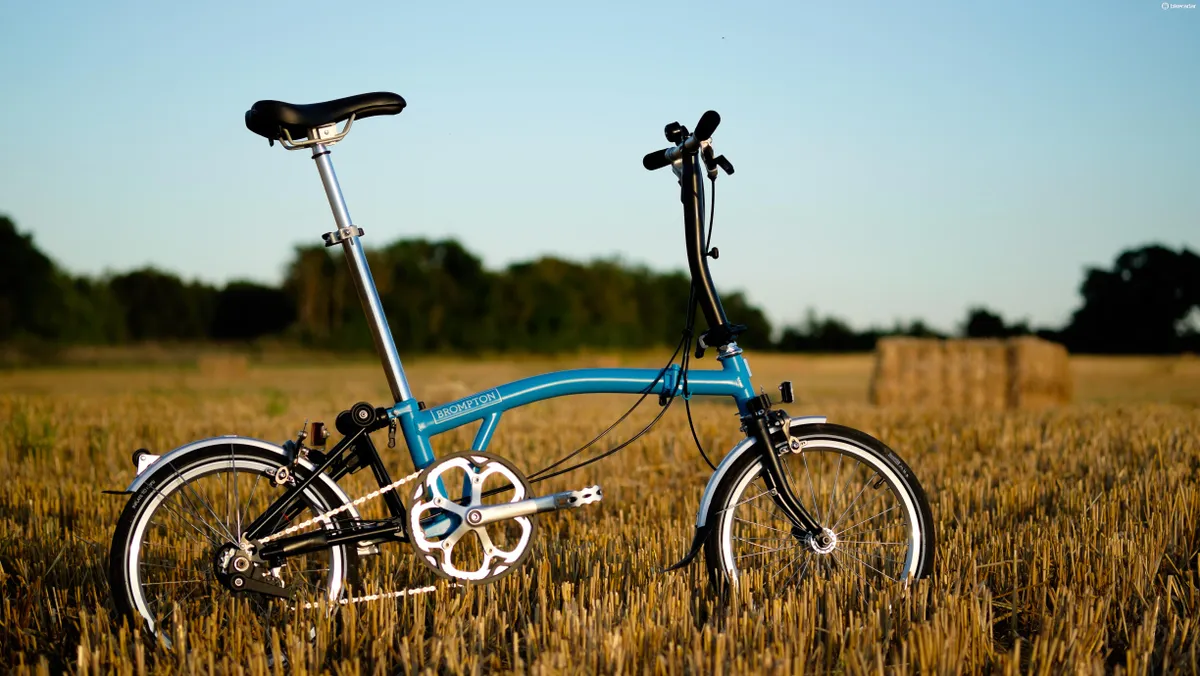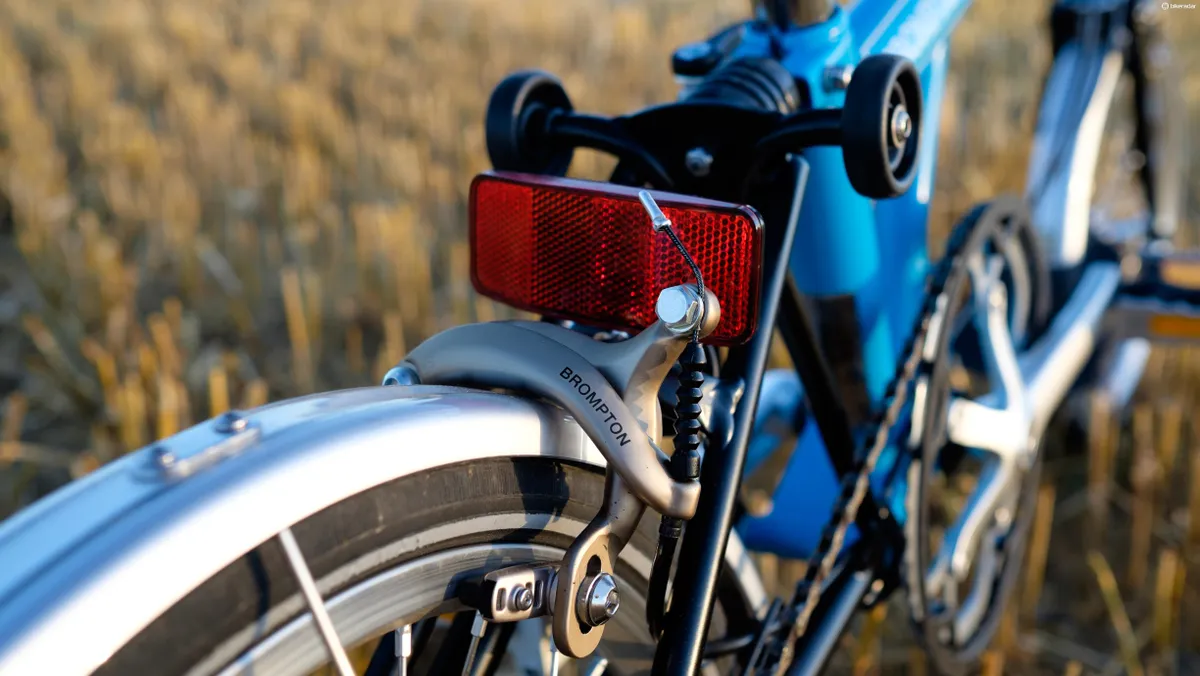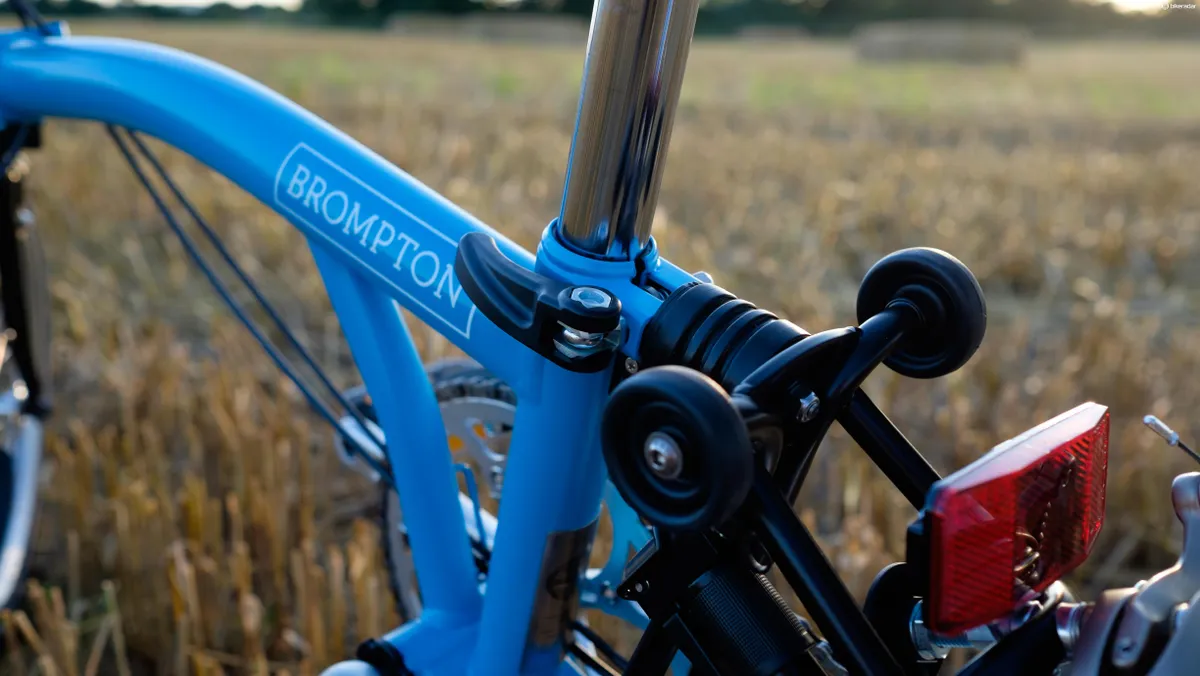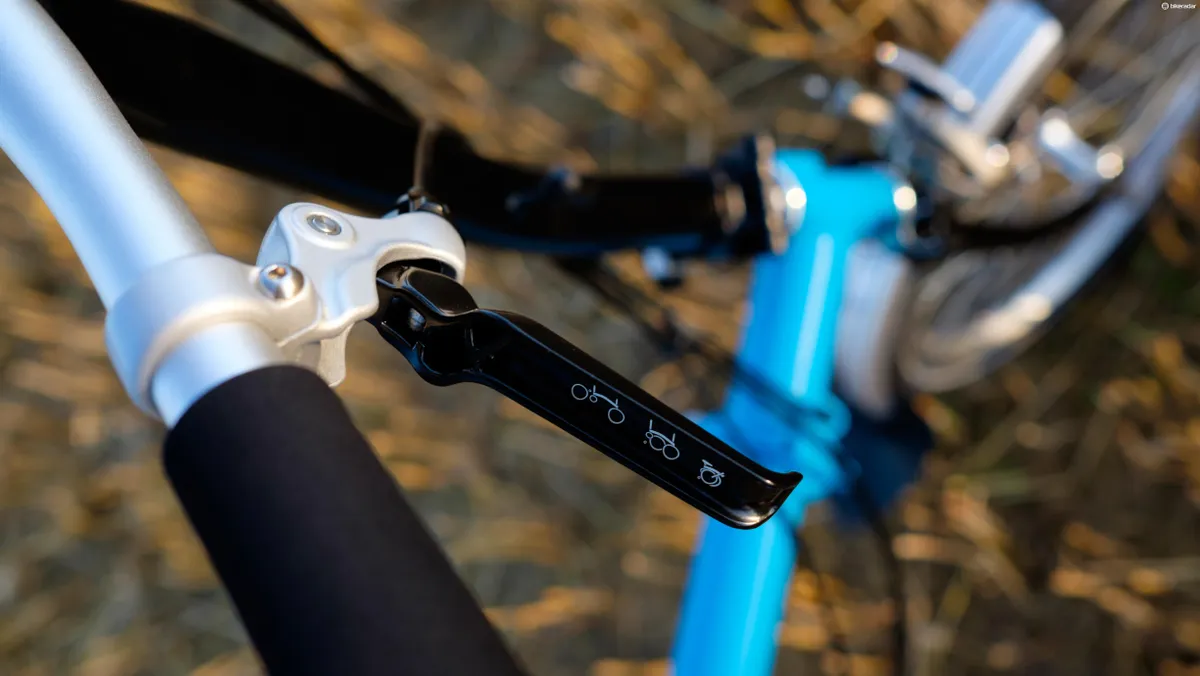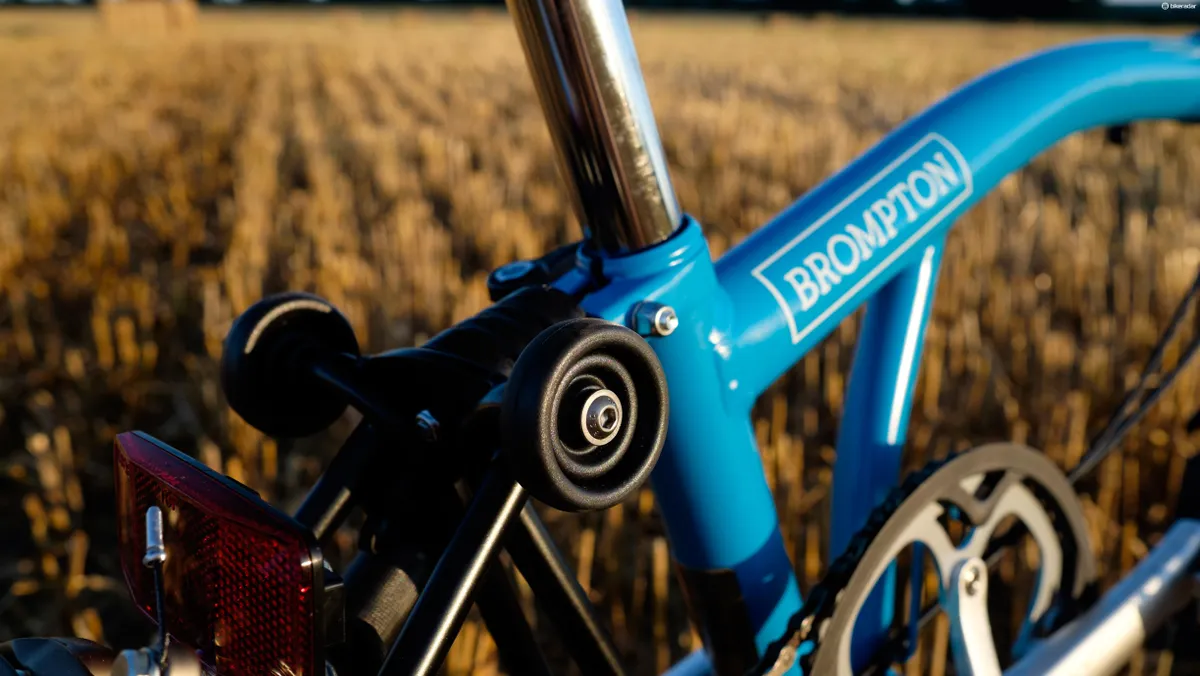Featuring only minor alterations since it was first produced in the early '80s, the Brompton has truly stood the test of time. To this day, the Brompton continues to fight off lighter, better-equipped and considerably cheaper competition from other bicycle manufacturers. So, just what is it that keeps people flooding to this quirky British bike? We requested one to find out for ourselves.
- The JIVR folding e-bike could spell the future for cycle commuters
- Best folding bike 2016: buyer’s guide and 8 of our recommendations
The Brompton’s ability to fold quickly and efficiently into a fraction of its size is its main selling point and it's something it has always done exceptionally well. Its distinctive frame design means that five simple steps, and around twenty seconds, are all it takes for the Brompton to go from fully rideable to easily hideable.
Folding procedure
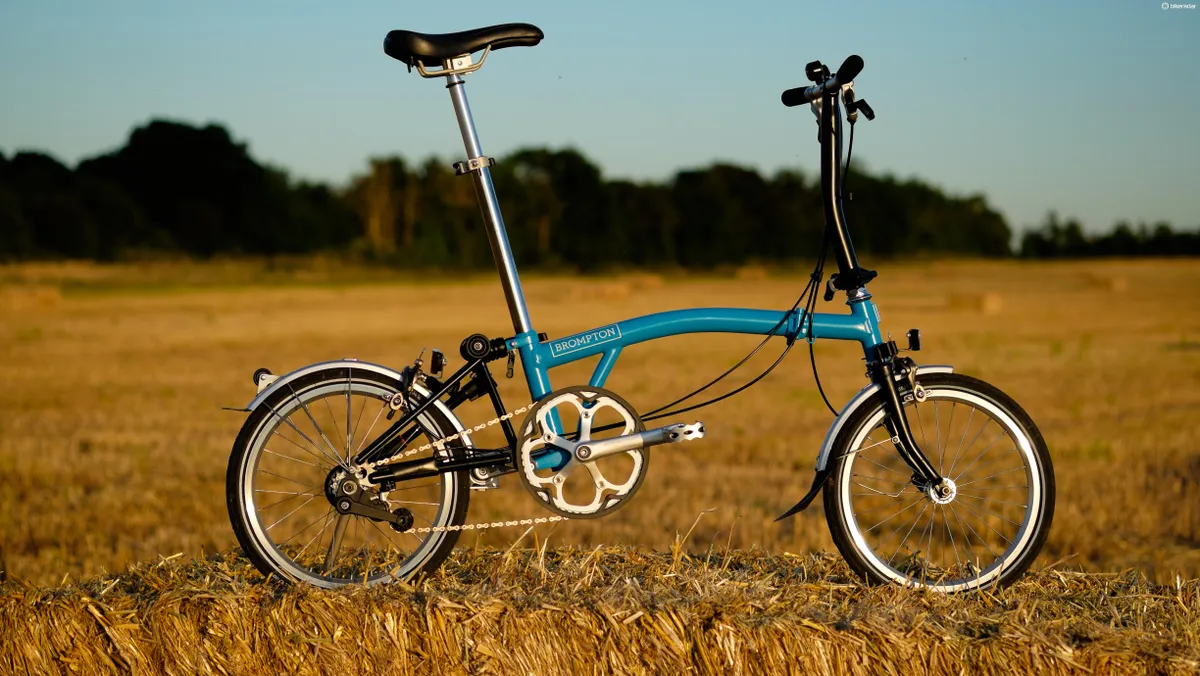
1. First up, allow the Brompton to display its party trick. A locking lever at the rear end (not present on early models) must be released; the Brompton’s rear triangle can then simply be lifted as it and the rear wheel pivots 180 degrees. With a slight turn of the handlebar, the rear end will then tuck neatly as both wheels touch.

2. The front of the Brompton’s steel mainframe must then be separated. Chunky wingnut style fastenings make this an easy and quick process. The front end then opens like a hinge as the fork locates neatly against the folded rear triangle.
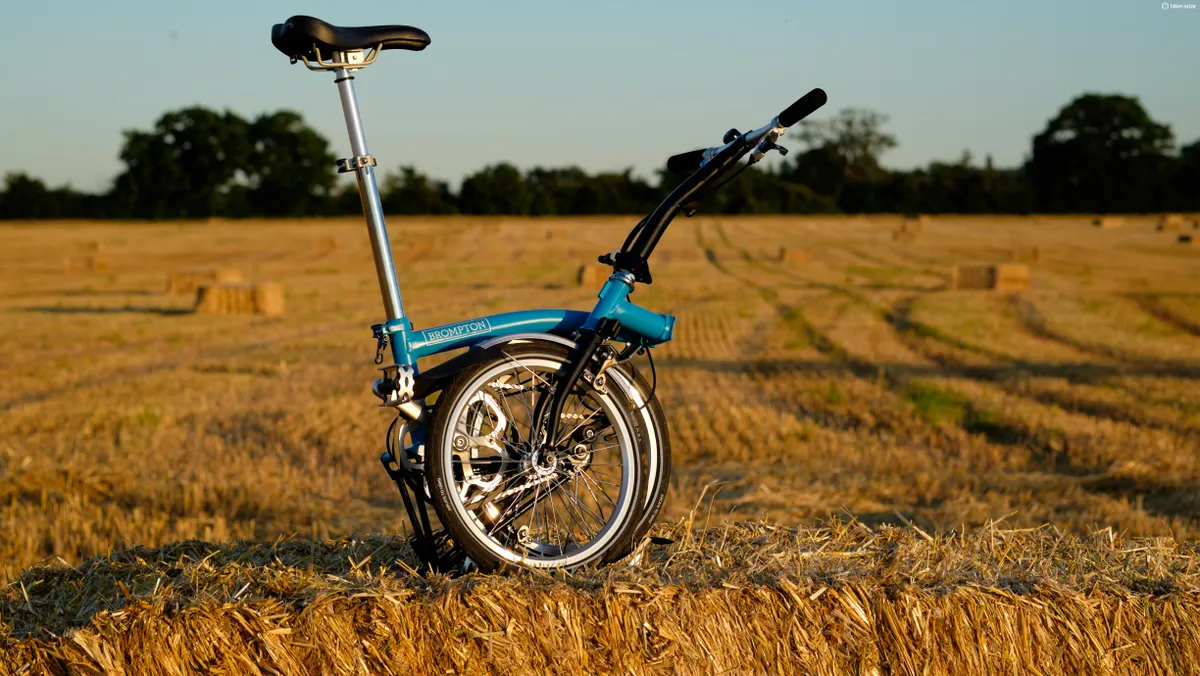
3. A second wingnut fastening is then opened just above the frame’s headset; this folds the entire handlebar and steering unit down into a locating clip.

4. Finally, the seatpost can be lowered, which locks the folded design in place and tucks the seat into its most compact position. A special pedal on the non-driveside can then be switched to further reduce the Brompton’s footprint.

5. Unfolding is as simple as doing the same thing in reverse.
Once fully folded, the Brompton can either be carried like a suitcase or wheeled along, thanks to three small luggage wheels. In practice, the latter isn’t really an elegant solution, and the Brompton’s significant weight (11.4kg as tested) means that you won’t want to be carrying it about for prolonged periods either.
For those who want a lighter bike there’s an ultra-spendy titanium rear triangle available, it saves a claimed 750g but will set you back an eye-watering £600.
Still, the compact fold allows the Brompton to fit under desks, in cupboards, onto trains and into the boots of even small cars without an issue.
The ride
So, we now know the Brompton is accomplished when it comes to folding, but how does it perform once unfolded?
Well, getting yourself comfortable shouldn’t be too difficult and that’s despite the Brompton frame being available in just one size. That’s because many options surrounding its build can be tailored to fit riders of different sizes: a special telescopic seatpost, for example, is available for taller riders.

Similarly, four different handlebars can be chosen — each offers a different position. From the sportier flat S-type (pictured) to the more upright H- and M-type riser bars and the multi-position P-type touring handlebar.
Having spent considerable time on both the M (riser) and S (flat) bars we preferred the slightly more relaxed feel of the riser handlebar, but testers of different sizes tended to disagree, so we’d really suggest booking a few test rides if you aren’t sure which you’d prefer.
Once in the saddle, the Brompton’s large steel front end goes a long way to justifying its weight. It’s stiff and feels impressively efficient. There’s noticeable flex at the steerer/stem area but this is most obvious under heavy braking and it doesn't cause any issues with steering accuracy.
Narrow handlebars mean that you can turn on a sixpence and get through the cheekiest of gaps
Talking of steering, it’s fast, fast to the point of twitchy for first-time riders, but give it a few minutes and you’ll soon adjust to its nimble ways. Narrow handlebars mean that you can turn on a sixpence and get through the cheekiest of gaps, but top-out the gearing and you’ll realise the Brompton is no KOM hunter.
It sure is comfy though, at the rear of the bike is a small polyurethane elastomer block, sandwiched between the frame’s front and rear triangles it provides crude yet effective bump absorption that manages not to interfere significantly with the bike’s climbing performance.

Our test bike was fitted with a basic two-speed derailleur transmission, which Brompton reckons is the best choice for portability. This system holds barely any weight disadvantage over a singlespeed Brompton and so for anyone facing big hills it should be a no-brainer. The shifter itself is a bit plasticky but we found no issues with its shift action
We personally think that for a majority of riders it is worth plumping for Brompton’s 3-speed Sturmey Archer hub. Its unburstable guts, easy set-up and single shifter operation, plus a useful range make it perfect for the Brompton. For those who require it there’s also a 6-speed version, which effectively pairs the 2-speed derailleur and 3-speed hub gear.
Perhaps unsurprisingly, we found that this bike excelled on shorter, flatter commutes where speed wasn't a priority
Those 16in wheels can turn out some surprising acceleration when necessary and Brompton’s own-brand tyres seemed to roll quickly and provided impressive puncture resistance. It’s worth noting that, thanks to old-school bolted axles and the aforementioned drivetrains, changing a puncture on a Brompton isn’t much fun and will require more tools than on most bikes.
The Brompton’s caliper brakes have a solid amount of stopping power, something that drops slightly when things get wet. Stiff metal levers are a huge improvement over what were offered on earlier models. Similarly, bikes newer than the one photographed here now arrive with trigger shifters that are a real improvement over the basic and slightly clunky components fitted previously.

Surrounding the wheels on our test bike were Brompton’s own mudguards, which come thoroughly recommended; we found them to work effectively without interrupting the folding procedure.
Brompton is also known for its practical luggage solutions, and so anyone intending to commute with additional kit will be able to make use of a host of front and rear luggage solutions.
Brompton ownership is also very much like a club, expect waves and nods from other Brompton riders as well as a wealth of good advice on forums, hell these bikes even have their own race series!
